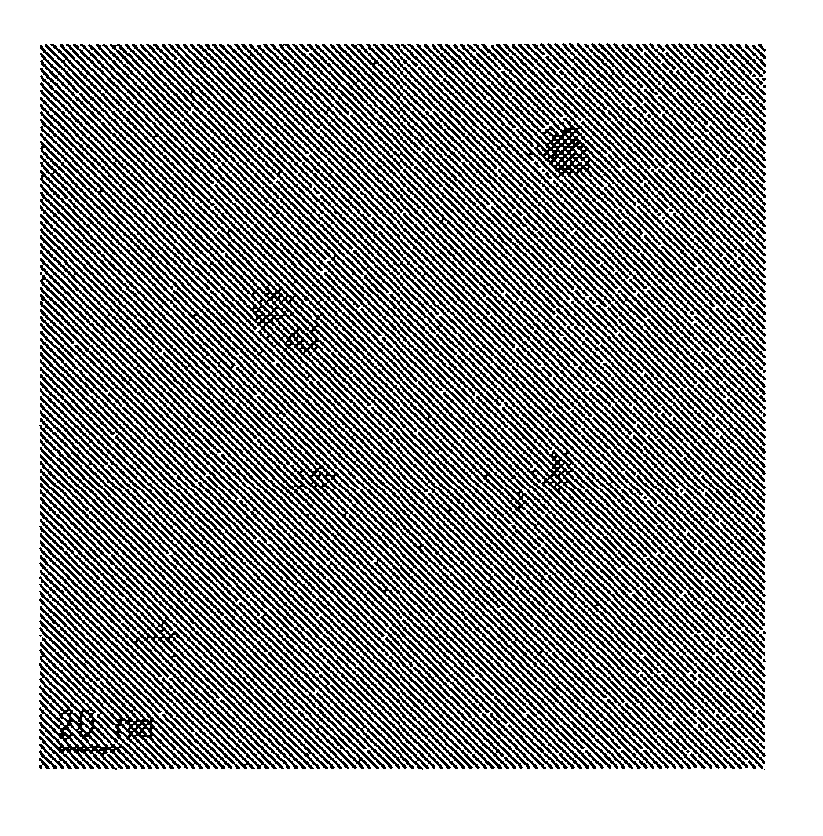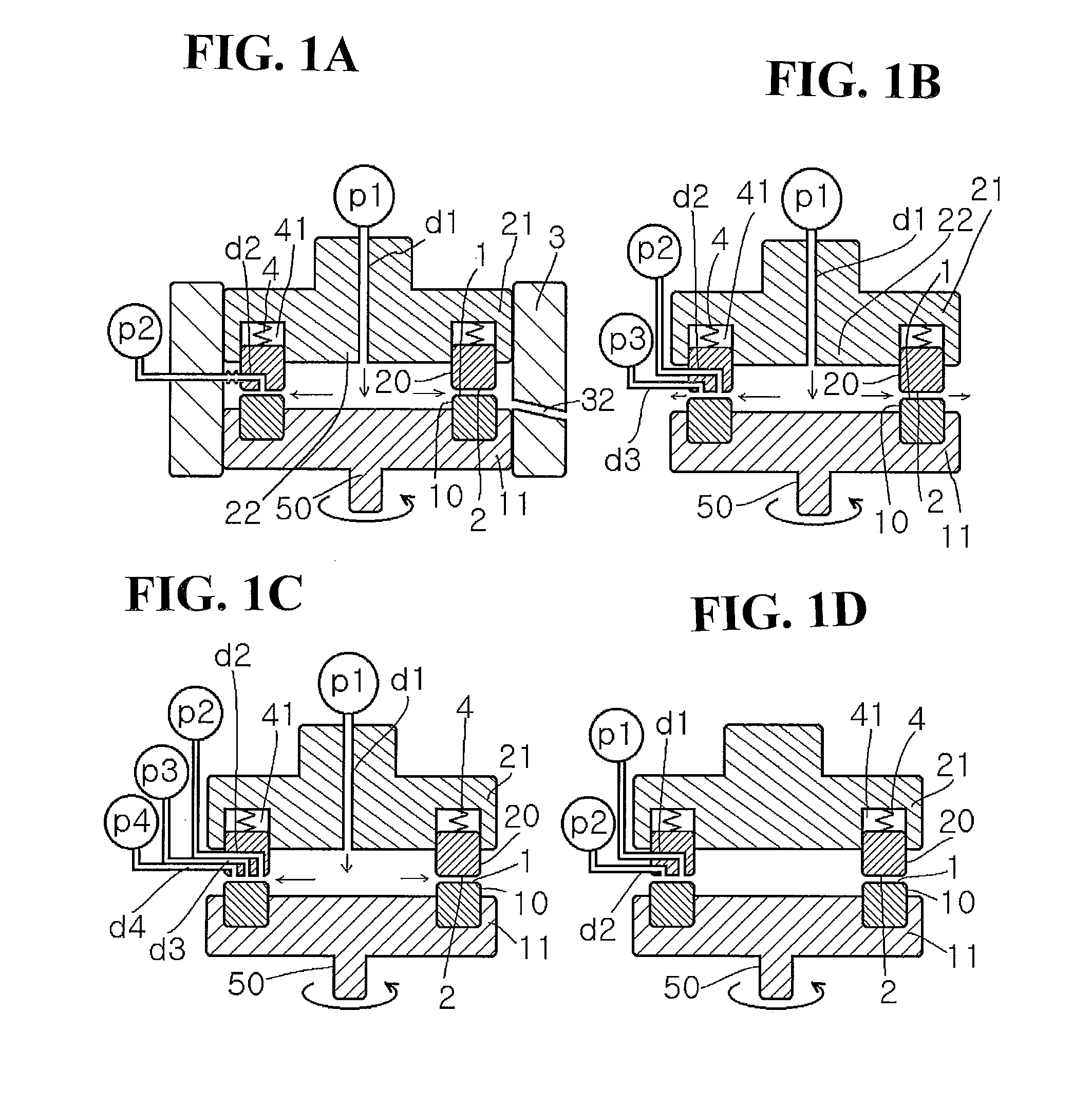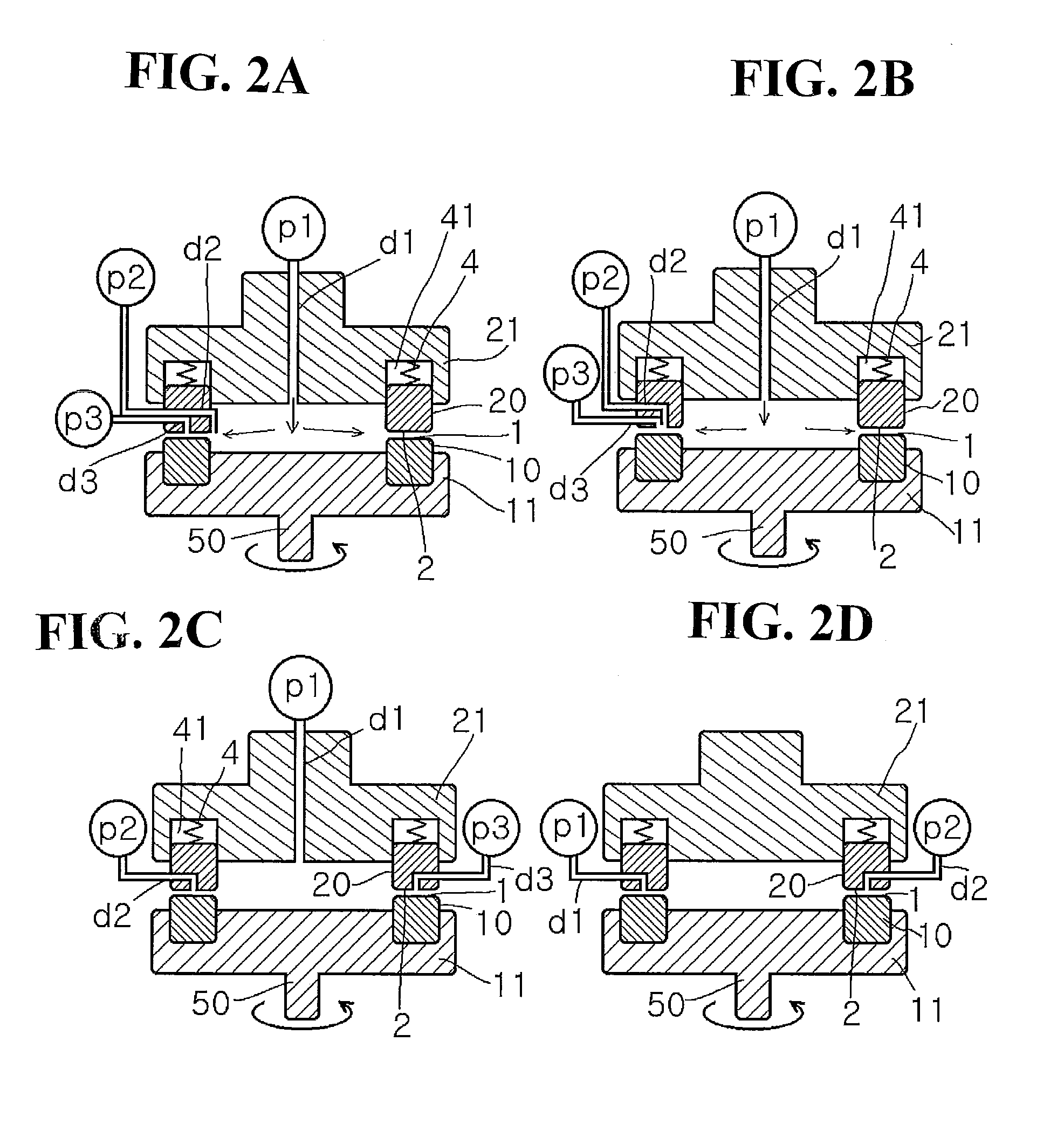Method for producing ceramic nanoparticles
a technology of ceramic nanoparticles and nanoparticles, which is applied in the direction of chemical/physical processes, alkaline earth titanates, inorganic chemistry, etc., can solve the problem that the common method of forming ceramics cannot be applied to ceramic nanoparticles, and achieve the effect of increasing the size and high the productive efficiency
- Summary
- Abstract
- Description
- Claims
- Application Information
AI Technical Summary
Benefits of technology
Problems solved by technology
Method used
Image
Examples
example 1
[0381]An aqueous solution adjusted to pH 2 with an aqueous solution of hydrochloric acid flows into an aqueous solution of IPA containing ceramics materials in a thin film fluid formed between the processing surfaces 1 and 2 arranged to be opposite to each other so as to be able to approach to and separate from each other, at least one of which rotates relative to the other, in use of a uniformly stirring and mixing reaction apparatus as shown in FIG. 1(A), thereby effecting hydrolysis reaction under uniform mixing in the thin film.
[0382]While an aqueous solution adjusted to pH 2 with an aqueous solution of hydrochloric acid was sent as a first fluid from the center at a supply pressure / back pressure of 0.30 MPa / 0.01 MPa and at a revolution number of 1000 rpm, a solution of 4% aluminum isopropoxide / IPA was introduced at a rate of 10 ml / min. as a second fluid into the space between the processing surfaces 1 and 2. An alumina nanoparticle dispersion was discharged from the processing ...
example 2
[0384]While an aqueous solution adjusted to pH 2 with an aqueous solution of hydrochloric acid was sent as a first fluid from the center at a supply pressure / back pressure of 0.10 MPa / 0.01 MPa and at a revolution number of 1000 rpm, a solution of 4% aluminum isopropoxide / IPA was Introduced at a rate of 10 ml / min. as a second fluid into the space between the processing surfaces 1 and 2. An alumina nanoparticle dispersion was discharged from the processing surfaces.
[0385]When the particle size distribution was measured with a particle size distribution measuring instrument utilizing a laser Doppler method (trade name: Microtrac UPA150, manufactured by Nikkiso Co., Ltd.), the average particle size was 10 nm and the CV value of the particle size distribution was 17%.
example 3
[0386]While an aqueous solution adjusted to pH 2 with an aqueous solution of hydrochloric acid was sent as a first fluid from the center at a supply pressure / back pressure of 0.30 MPa / 0.01 MPa and at a revolution number of 2000 rpm, a solution of 4% aluminum isopropoxide / IPA was introduced at a rate of 10 ml / min. as a second fluid into the space between the processing surfaces 1 and 2. An alumina nanoparticle dispersion was discharged from the processing surfaces.
[0387]When the particle size distribution was measured with a particle size distribution measuring instrument utilizing a laser Doppler method (trade name: Microtrac UPA150, manufactured by Nikkiso Co., Ltd.), the average particle size was 14 run and the CV value of the particle size distribution was 15%.
PUM
| Property | Measurement | Unit |
|---|---|---|
| diameter | aaaaa | aaaaa |
| diameter | aaaaa | aaaaa |
| pH | aaaaa | aaaaa |
Abstract
Description
Claims
Application Information
 Login to View More
Login to View More - R&D
- Intellectual Property
- Life Sciences
- Materials
- Tech Scout
- Unparalleled Data Quality
- Higher Quality Content
- 60% Fewer Hallucinations
Browse by: Latest US Patents, China's latest patents, Technical Efficacy Thesaurus, Application Domain, Technology Topic, Popular Technical Reports.
© 2025 PatSnap. All rights reserved.Legal|Privacy policy|Modern Slavery Act Transparency Statement|Sitemap|About US| Contact US: help@patsnap.com



